Text

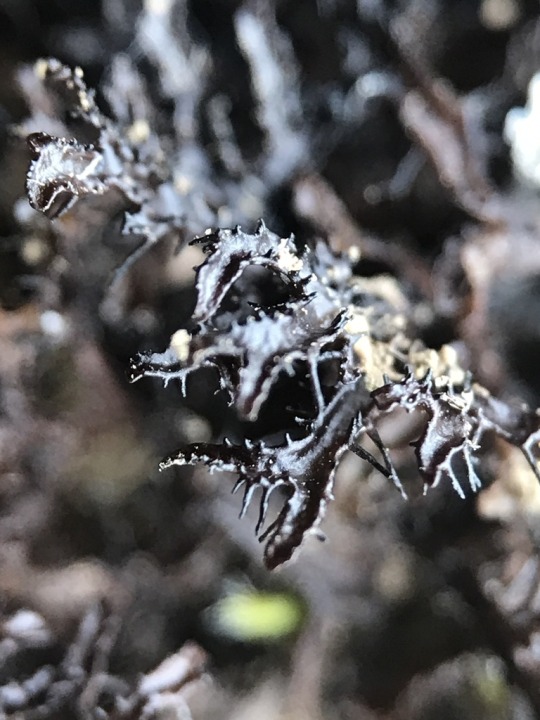

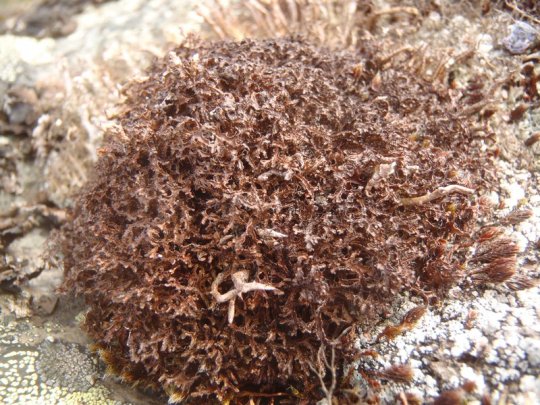




Cetraria nigricans
Blackened Iceland lichen
This foliose-fruticose lichen forms mats and rounded tufts made up of narrow, channeled, ciliate-margined lobes. The upper surface is olive to dark brown to black-brown in color, and becomes darker when exposed to sunlight. The lower surface is paler brown, with inconspicuous pseudocyphellae. It produces marginal apothecia which have spiny margins and convex, red-brown discs. C. nigricans grows on soil and rock in exposed, arctic-alpine regions.
images: source | source | source
info: source | source
#lichen#lichens#lichenology#lichenologist#mycology#ecology#biology#fungi#fungus#symbiosis#symbiotic organisms#algae#life science#environmental science#natural science#nature#the natural world#beautiful nature#weird nature#Cetraria nigricans#Cetraria#trypo#trypophobia#i'm lichen it#lichen a day#daily lichen post#lichen subscribe
28 notes
·
View notes
Text



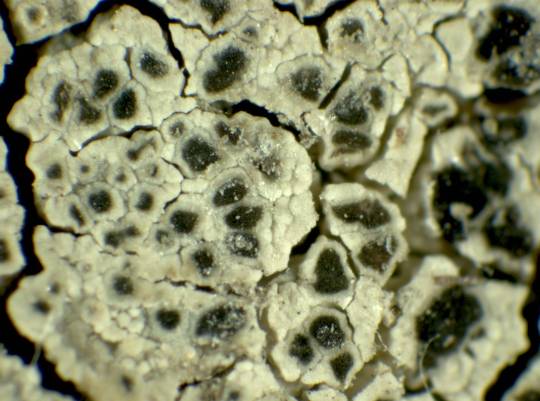






Lecanora intricata
Lichens have a few different ways to reproduce (they're just awesome like that) but most lichen symbioses include an ascomycete fungi, AKA a sac fungi. These fungi create spores in internal sacs known as asci (singular: ascus), and lichenized ascomycetes often house these sacs in their apothecia, or fruiting bodies. So you see those dark spots on the surface of our pal L. intricata here? Those are its apothecia, or its fruiting bodies, from which fungal spores will be ejected to go out and hopefully form their own little lichens someday. Pretty neat, huh? L. intricata is a crustose lichen with a verrucose (wart-like)-areolate (tile-like) thallus. It has a gray-green to yellow-green surface sitting atop a dark prothallus (a layer of fungal hyphae). It should look something like puzzle-pieces on a dark surface. It has blackish-green to brown, irregularly shaped apothecia immersed in the thallus surface. L. intricata grows on silicious rock and occasionally wood in montane, boreal, and arctic habitats.
images: source | source | source | source
info: source | source | source
#lichen#lichens#lichenology#lichenologist#mycology#ecology#biology#fungi#fungus#nature#symbiosis#symbiotic organisms#algae#the natural world#life science#environmental science#natural science#trypo#trypophobia#Lecanora intricata#Lecanora#I'm lichen it#lichen a day#daily lichen post
46 notes
·
View notes
Text


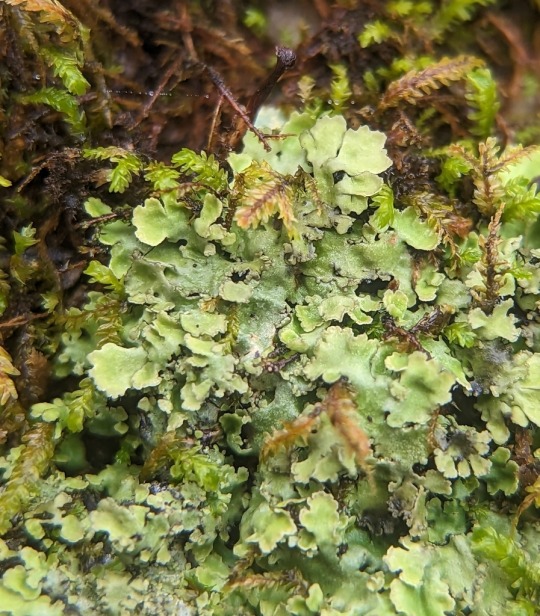
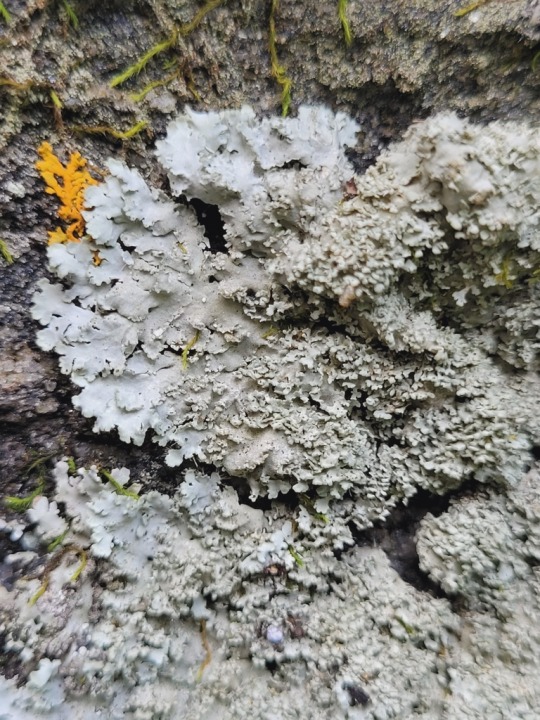

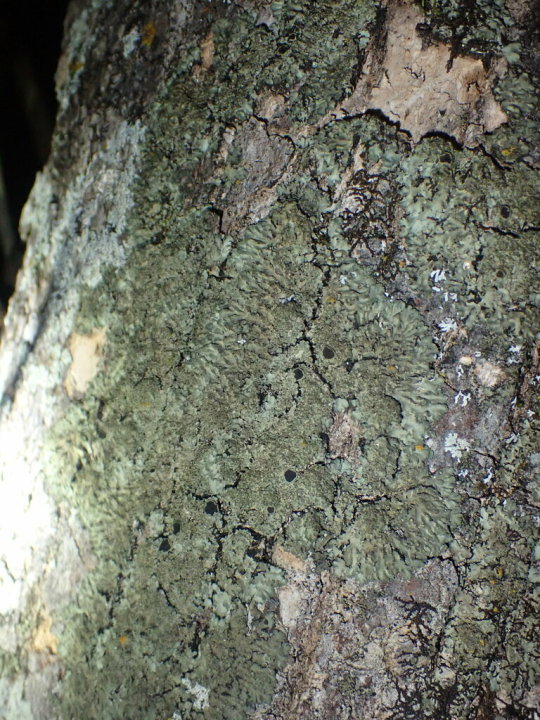
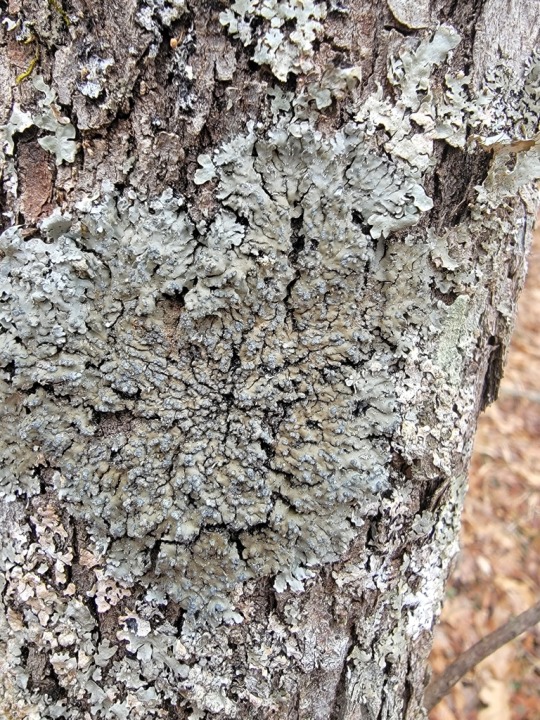

Phaeophyscia squarrosa
Scaly shadow lichen
Using this lichen for my regular reminder that lichens are NOT plants. Lichens are an association between an obligate fungal host (mycobiont) and one or more photosynthesizing partners (a green algae and/or a cyanobacteria). It is a fungus using unicellular organisms that photosynthesize so it can cosplay as a plant.
images: source | source
#lichen#lichens#lichenology#lichenologist#lichen subscribe#mycology#ecology#biology#symbiosis#symbiotic organisms#algae#life science#environmental science#natural science#sicence#nature#the natural world#beautiful nature#weird nature#naturalist#Phaeophyscia squarrosa#Phaeophyscia#trypo#trypophobia#I'm lichen it#lichen a day#daily lichen post#go outside#take a hike#look for lichens
60 notes
·
View notes
Text
Ok so I know this is fish not lichens (trust me, I'm a biologist) but this is the "problem" with folks giving things that aren't common a common name--it can create confusion and a lack of consistency when referring to the organism. But personally I am here for scientists doing that (like that's why we have the scientific name, so we can all know wtf you are actually referring to) and getting as wild as they want with it just to draw attention to organisms that generally don't receive enough attention. So go off, McAllister. Though yeah, I think "crotchfeeler" might not be in the best taste. Maybe "consensual crotchfeeler" would be preferable?
I think I stumbled upon some kind of ichthyological forbidden knowledge. Opened up a book of names that were never meant to be read.
You've probably heard of "can-opener smoothdream", right? It's practically a meme by now.
But the thing is, it's a deep-sea fish. And deep-sea fish have historically not had English names because nobody drops them into the conversation over a hot cuppa. Sure, there's generic stuff like hatchetfish and barreleye, but when you want to refer to the actual fish you're probably saying such euphonious phrases as Diretmus argenteus, Sternoptyx diaphana, or maybe even Opisthoproctus soleatus.
So whence "can-opener smoothdream"? Certainly no non-ichthyologist has ever used that name. It's not even a direct translation of the scientific name Chaenophryne longiceps - that would be "long-headed gape-toad". Which to me is even cooler than "can-opener smoothdream".
But I digress. The "dream" bit comes from the anglerfish family Oneirodidae, from oneiros, "dream", because those marvelous fishes look like they came out of a dream (Pietsch, 2009).
Note that Pietsch (2009), more or less the anglerfish bible, uses English names at the genus level only. So Chaenophryne is the smoothhead dreamers genus but no mention is made of "can-opener smoothdreams". So no luck there.
Wikipedia, root cause of a lot of misinformation, has this to say.

"Longhead dreamer" is a far more accurate name. And in fact, despite Wikipedia prioritizing "can-opener smoothdream" (because it's funny?), the links listed use "longhead dreamer" and "smoothhead dreamer" as the name and "can-opener smoothdream" as an alternative.
So. Again. Where did "can-opener smoothdream" come from?
The answer, as it turns out, lies with McAllister (1990).
In the book A List of the Fishes of Canada, ichthyologist D. E. McAllister sought out to list every single fish known to Canadian waters, providing both an English and a French name.
And when there wasn't an English name, like for most deep-sea fishes, he arbitrarily gave them a name. And his names "differ in many instances from the widely accepted names" (Holm, 1998)
This had varying results. This is his name for one of the netdevil anglerfishes.

The humpback anglerfish or blackdevil anglerfish becomes a werewolf (????).

This one is just confusing.

The white-spotted lanternfish or Rafinesque's lanternfish instead becomes...

And most embarrassingly, the Mediterranean spiderfish gets saddled with something that "violates the tenet of good taste" (Holm, 1998).

This then is the original source of "can-opener smoothdream". It was invented by an ichthyologist in 1990, and has seen little to no use outside of how bizarre the name is.

Maybe McAllister's goofier names will catch on. Who knows? They certainly aren't very popular in the scientific community though.
References
Holm, E. (1998) Encyclopedia of Canadian Fishes (review). The Canadian Field-Naturalist, 112, p. 174-175.
McAllister, D. E. (1990) A List of the Fishes of Canada. National Museum of Natural Sciences, Ottawa.
Pietsch, T. W. (2009) Oceanic Anglerfishes: Extraordinary Diversity in the Deep Sea. University of California Press, Berkeley.
5K notes
·
View notes
Text

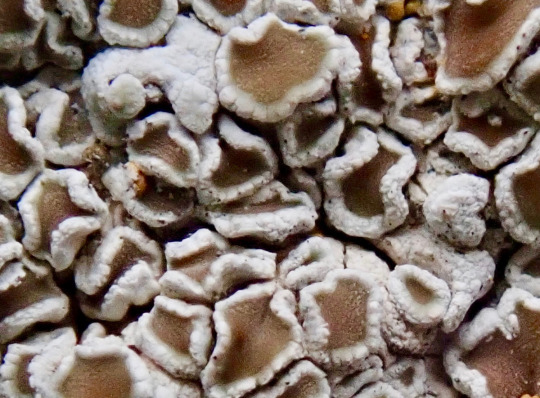

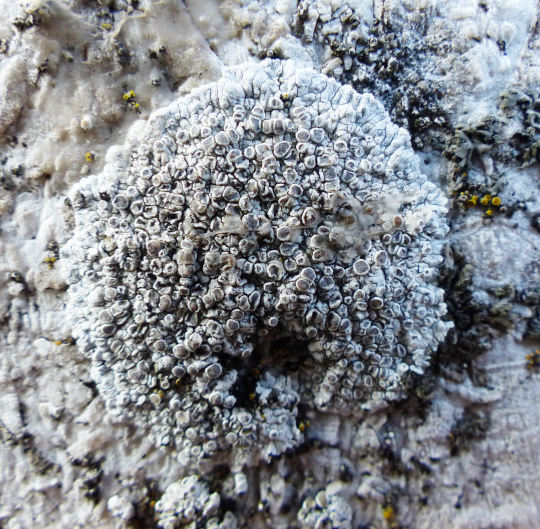


Polyozosia pruinosa
Ok but the GBIF page for this species has an adorable picture of lichen enthusiasts looking at it in their natural habitat and it is too cute?
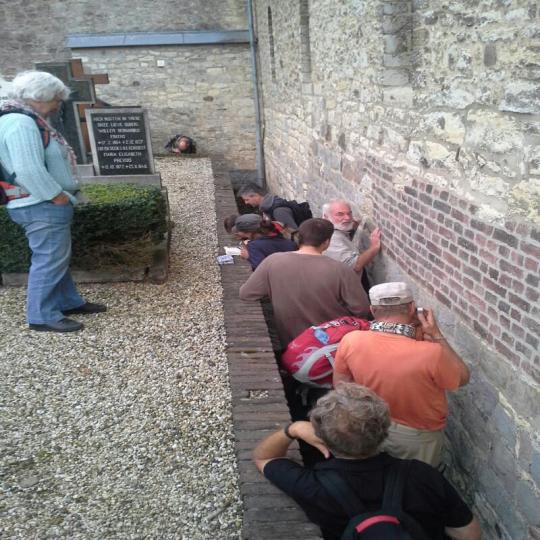
She has her own fan club. Can you say the same? I didn't think so.
images: source | source
#lichen#lichens#lichenology#lichenologist#mycology#biology#ecology#fungi#fungus#symbiosis#symbiotic organisms#algae#trypo#trypophobia#life science#environmental science#natural science#naturalist#nature#beautiful nature#weird nature#Polyozosia pruinosa#Polyozosia#I'm lichen it#lichen a day#daily lichen post#lichen subscribe
90 notes
·
View notes
Note
My father has a PhD in ecology and specializes in lichens so when I saw your blog recommended to me I immediately went and showed him and he started having me search for things and he is now sitting at the desktop computer looking into the fossil lichen you posted about. Just wanted to share since he does not have a tumblr himself to tell you that you've got some cool lichens here!
Hey, there aren't a lot of lichen specialists out there so that's awesome! I hope he enjoys reading up on fossil lichens as much as I do. I am always nervous some *real* lichenologist is gonna find this blog and criticize my mistakes or my approach or something, I don't know. Imposter syndrome manifests in some weird ways. But in my experience, lichenologists are pretty cool folks. It makes sense since they spend so much time with the coolest organisms on earth.
57 notes
·
View notes
Note
Do you know much about dyeing with lichens? I don't know much about it myself but am curious on what the standpoint is from those who study them. Ethical harvesting has been a huge thing I have heard from dyers in what I have seen.
I do know a bit! I got really into collecting lichens for dying, but when it came to the actual dying part I kinda lost my hyperfocus. But everything I learned came from "Lichen Dyes: The New Source Book" by Karen Diadick Casselman, which has a great section on the ethics of harvesting. I try to only collect lichens for dying that:
I can recognize
I know are abundant
are detached from the substrate or are otherwise in danger of being destroyed
are in unprotected areas
I find plenty of material in roadside gutters, in parking lots, on walking trails and sidewalks, on broken or cut branches, at parks and just about every tiny green space around shops and office buildings, etc. etc. I would never advocate for large-scale or commercial harvesting or collection, the impact should be insignificant in the grand scheme of things, and is a great way to learn about and connect with your local lichen species.
113 notes
·
View notes
Note
Hi! I'm interested in mycology and recently started getting into lichens as well. How/where do you study lichens?
I study lichens at LMU Munich in Germany, and I am currently a PhD student. Not every university biology department offers courses on lichens or has a group that regularly studies lichens, but they are out there if you look!
13 notes
·
View notes
Text



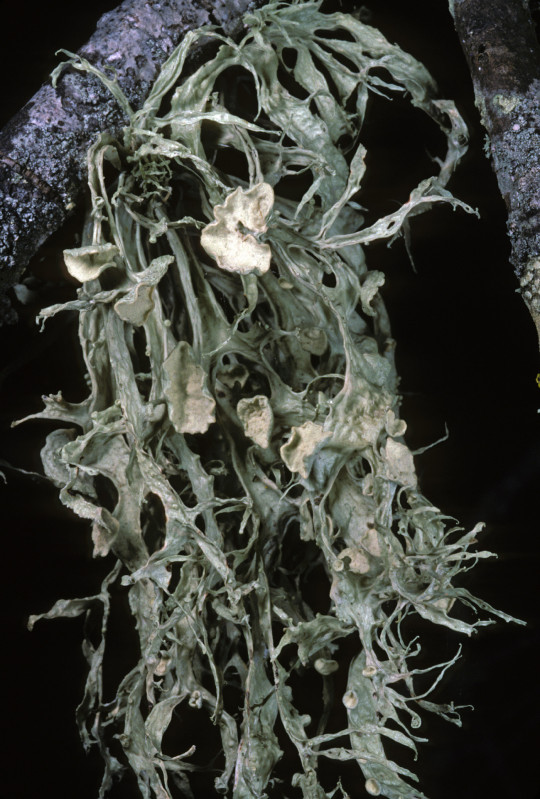

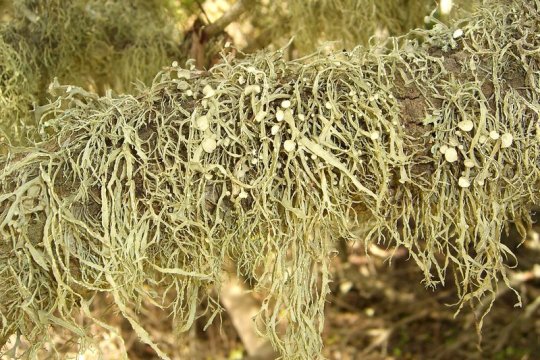
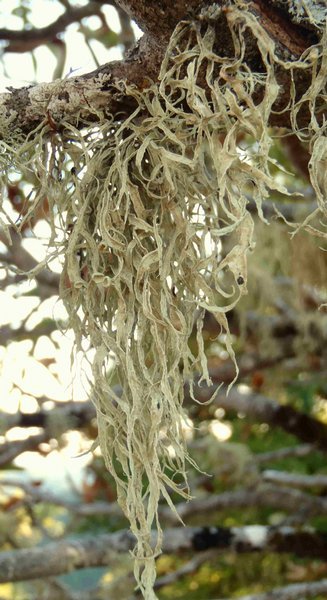
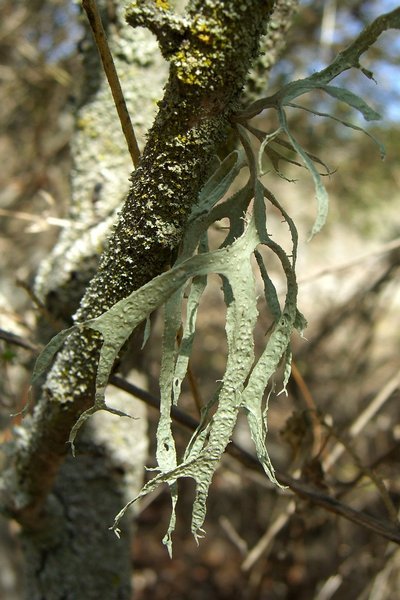

Ramalina leptocarpha
Western strap lichen
images: source | source
#lichen#lichens#lichenology#lichenologist#mycology#ecology#biology#fungi#fungus#symbiosis#symbiotic organisms#algae#life science#environmental science#natural science#trypo#trypophobia#I'm lichen it#lichen a day#daily lichen post#lichen subscribe
155 notes
·
View notes
Text
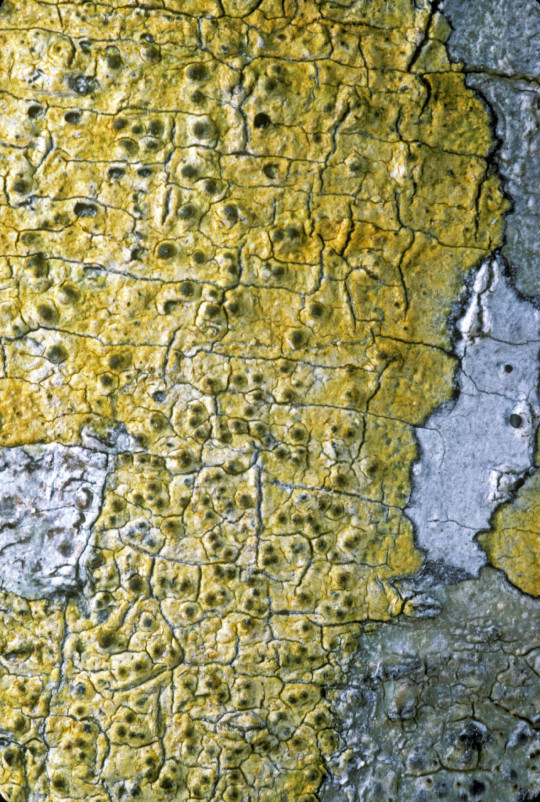
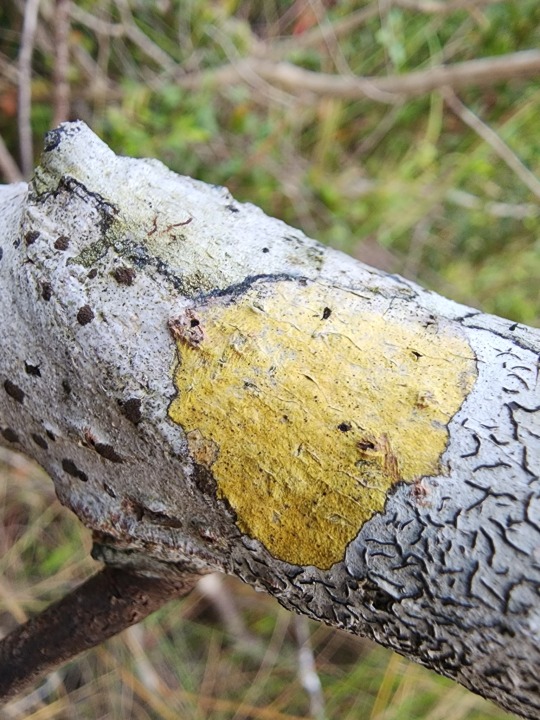
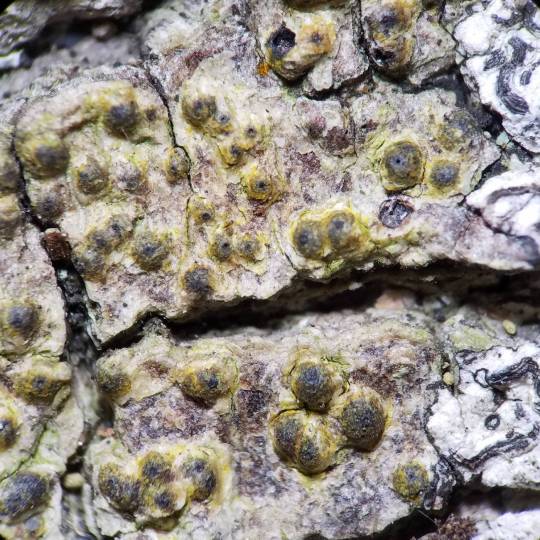
Pyrenula ochraceoflavens
Yellow pox lichen
This crustose lichen has a yellow-orange, continuous or cracked thallus, and is usually more pigmented around the perithecial fruiting bodies. These perithecia have a weakly carbonized (blackened) pseudostromatic shell (the raised, blister like part around the ostiole). P. ochraceoflavens grows on the smooth bark of tropical forest trees, and has been recorded in Florida, USA, the Caribbean, and India. But there are so many variations within the genus and even within the species that delimitation is hazy at best. A pox on Pyrenula and all its related genera!
images: source | source | source
info: source | source
#lichen#lichens#lichenology#lichenologist#ecology#mycology#biology#fungi#fungus#nature#naturaliste#trypo#trypophobia#Pyrenula ochraceoflavens#Pyrenula#life science#environmental science#natural science#I'm lichen it#lichen a day#daily lichen post#lichen subscribe
53 notes
·
View notes
Text

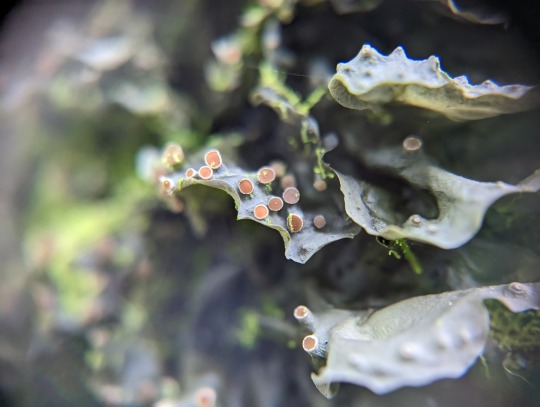

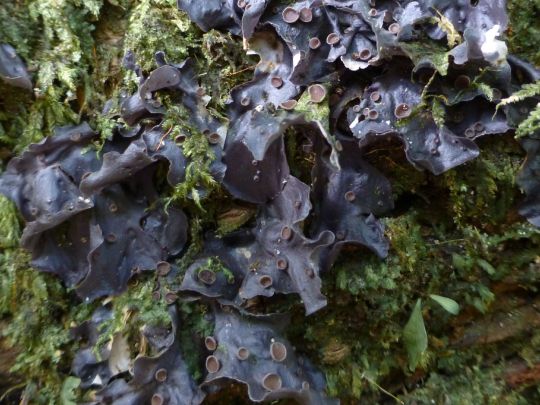

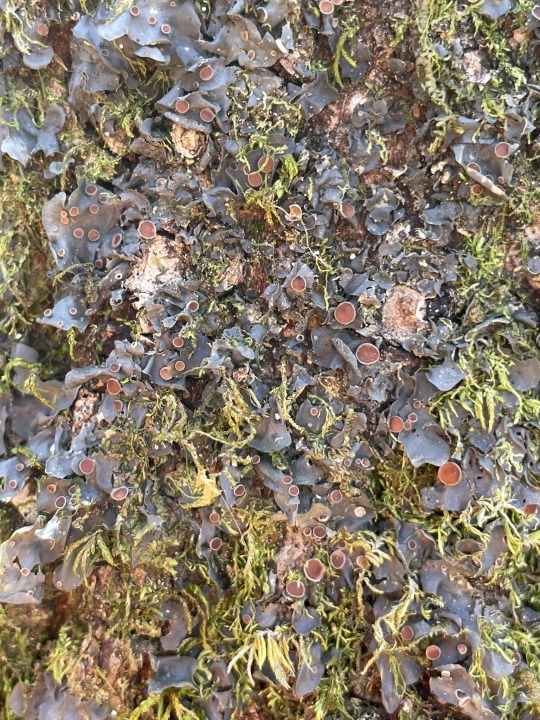
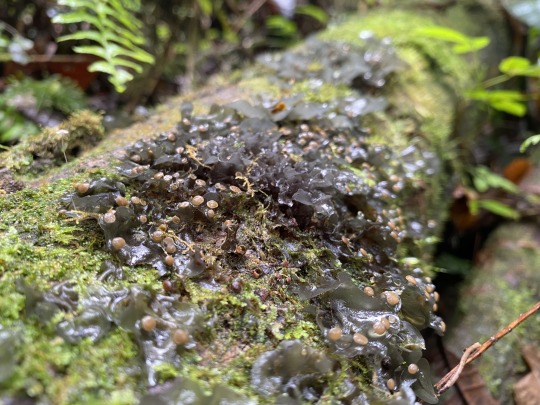
Leptogium azureum
Blue jellyskin lichen
I love when lichens get names like L. azureum and blue jellyskin lichen and then you look at them and are like . . . yeah maybe I would say its blue I guess? Like clearly whoever name L. azureum had been looking at a lot of dull-colored lichens before this one to come up with that name. This gelatinous, foliose lichen has broad, irregular lobes growing in large patches up to 9 cm in diameter. The upper surface is bluish-gray when dry, and darker blue-green when moist. The lower surface is paler gray and wrinkled with white hairs. It produces red-brown apothecia which grow on very short stalks and have a thalline margin around the disk. It has a cyanobacterial photobiont. L. azureum grows on acrid rock and bark in tropical and subtropical regions around the globe.
images: source | source
info: source | source
#lichen#lichens#lichenology#lichenologist#mycology#ecology#biology#fungi#fungus#symbiosis#symbiotic organisms#cyanobacteria#life science#environmental science#natural science#nature#the natural world#beautiful nature#weird nature#Leptogium azureum#Leptogium#jellyskin lichen#trypo#trypophobia#lichen a day#daily lichen post#I'm lichen it#lichen subscribe#go outside#take a hike
92 notes
·
View notes
Text
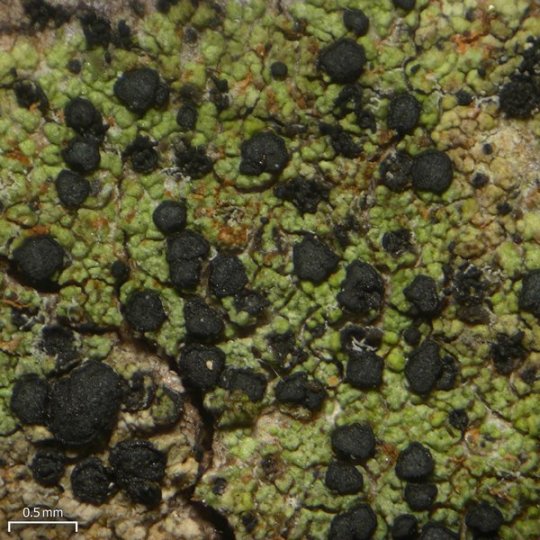
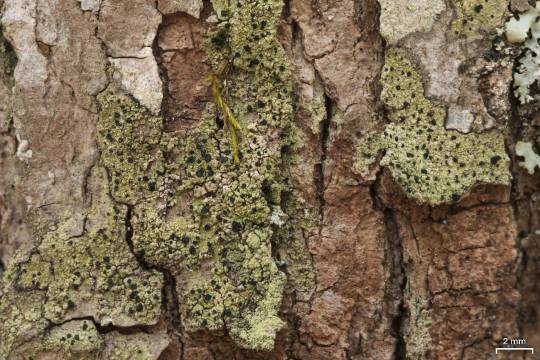
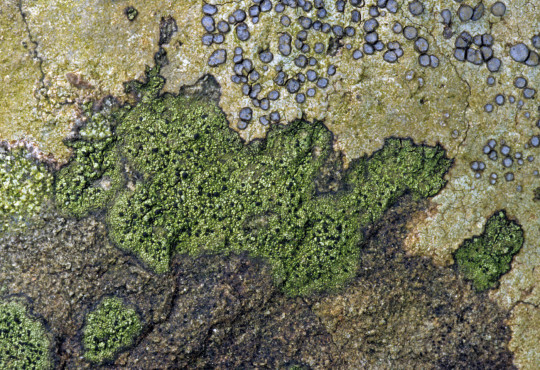
Buellia vernicoma
Once upon a time, some lichen samples from North America were sent to a lichenologist in Europe. There was one small rock that had 2 different crustose lichen species on it, and the American lichenologist (Tuckerman) labeled the sample with name of the smaller of the two (B. vernicoma) with a penciled in arrow pointing to it. But the European scientist (Nylander) didn't notice the arrow, and thought that the American scientist was referring to the larger lichen present on the rock of B. vernicoma. Nylander recognized this species as Lecidea myriocarpella, and came to the conclusion that what the American lichenologists were calling B. vernicoma and what European scientists where calling L. myriocarpella must be the same thing. He synonymized the names, and from then on it was thought that B. vernicoma was present in Europe. It wasn't until 1999 that Anders Nordin, a Swedish lichenologist, realized that the reason that B. vernicoma had never been collected in Europe was because it truly wasn't there, and managed to track down the source of the error. For centuries we thought B. vernicoma was in Europe when it never was, all because of a small communication error. And what of the European L. myriocarpella? Well when folks believed it was the same as a more common North American species, no one really bothered to keep track of it, and so very little is known about it to this day. So whenever you get annoyed having to clarify yourself in an email, remember how lucky we are to live in an age where miscommunication can be remedied in such a short amount of time.
images: source | source
info: source | source
#lichen#lichens#lichenology#lichenologist#mycology#ecology#biology#fungi#fungus#symbiosis#taxonomy#systematics#science#scientists#natural science#environmental science#life science#nature#naturalist#Buellia vernicoma#buellia#trypo#trypophobia#lichen a day#daily lichen pot#lichen subscribe#I'm lichen it
55 notes
·
View notes
Text
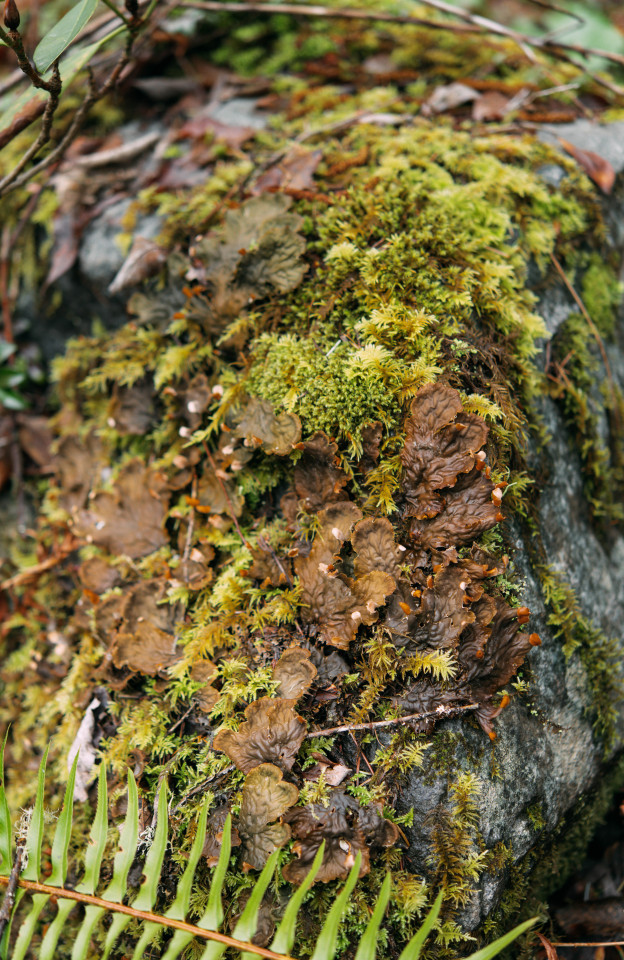
Pelt lichen
269 notes
·
View notes
Text

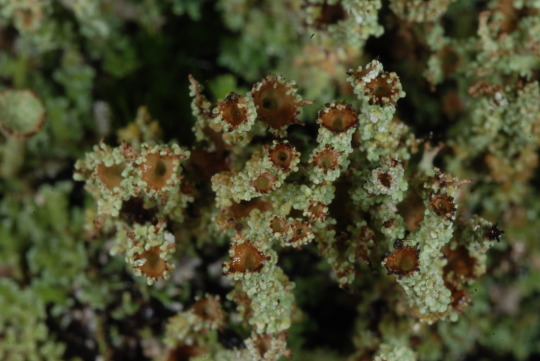
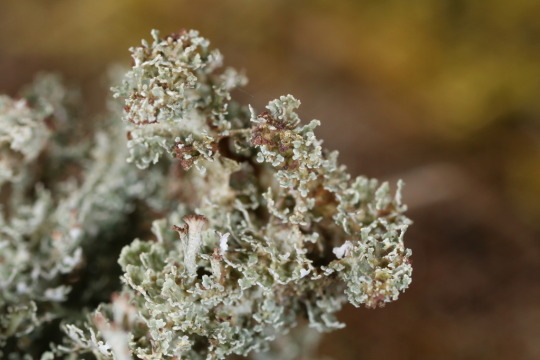



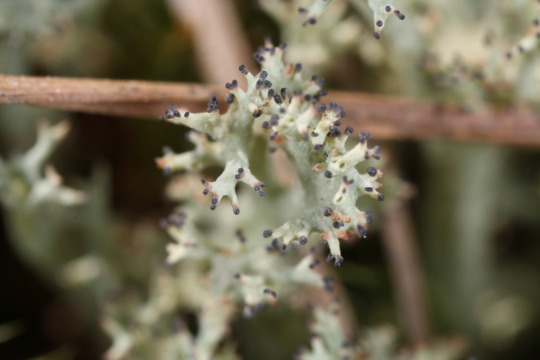
Cladonia atlantica
Atlantic cladonia, Atlantic cup lichen
images: source
#lichen#lichens#lichenology#lichenologist#mycology#ecology#biology#fungi#fungus#symbiosis#symbiotic organisms#algae#Cladonia atlantica#Cladonia#pixie cup lichen#I'm lichen it#lichen a day#daily lichen post#life science#environmental science#natural science#nature#naturalist#beautiful nature#weird nature
135 notes
·
View notes
Text
Kissing in the lab is very much against lab safety protocols. Normalize kissing in the sample storage room by the -80° freezer.
I am covered in hickies how am I supposed to be a respected scientist looking like this!?!
#scientist#scientists#science#lab safety#osha compliant#like they specifically told us during our last safety meeting that kissing was against protocol#we wrote it down and stuck it on our office door
35K notes
·
View notes
Text
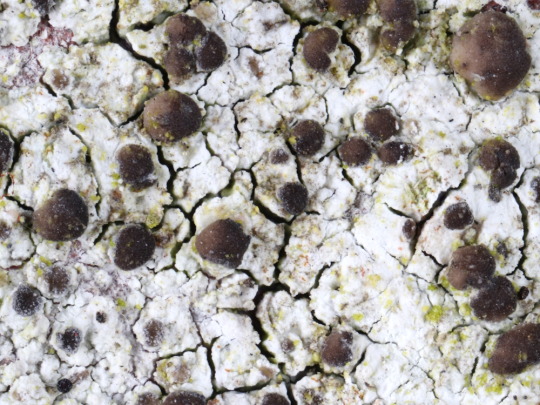

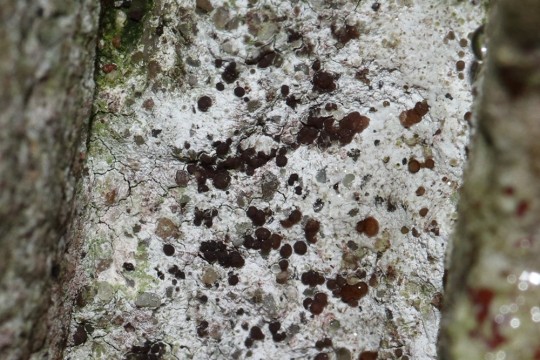
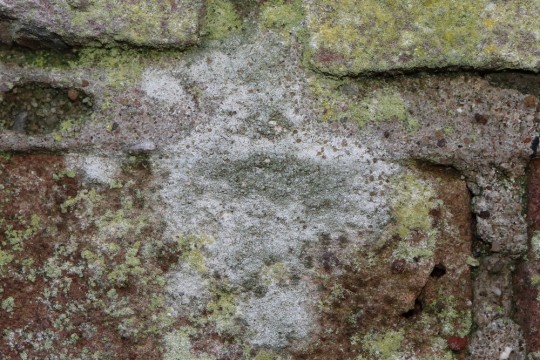


Lecania turicensis
This crustose lichen has a white-gray, granular or areolate (tile-like) thallus. It has reddish-brown to brown-black apothecia often coated in white pruina. The apothecia are often crowed and deformed, but can also be more dispersed and subglobose. L. turicensis grows on rock, mortar, and human-made materials in Australasia, northern Africa, Europe, and North America.
images: source
info: source | source | source
#lichen#lichens#lichenology#lichenologist#mycology#biology#ecology#fungi#fungus#symbiosis#symbiotic organisms#algae#life science#environmental science#natural science#nature#the natural world#trypo#trypophobia#Lecania turicensis#Lecania#I'm lichen it#lichen a day#daily lichen post#lichen subscribe
33 notes
·
View notes